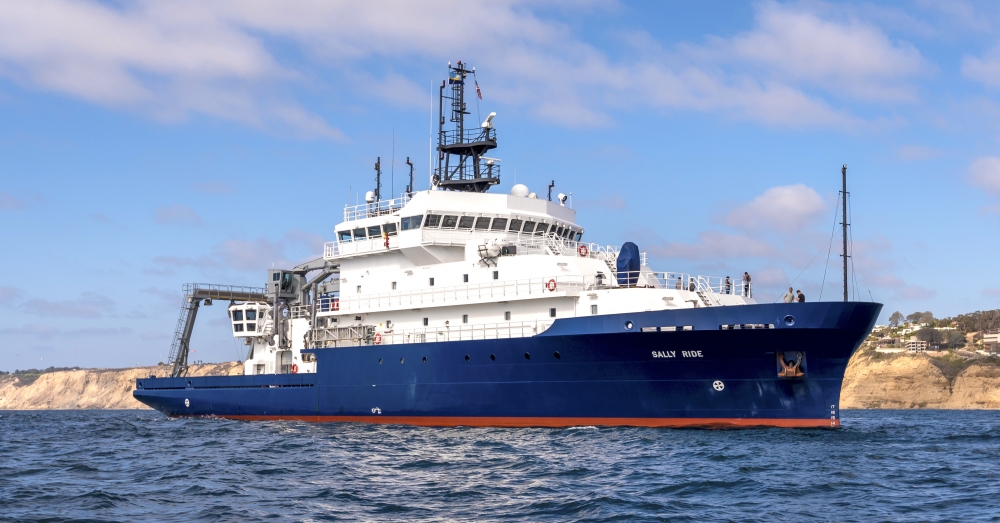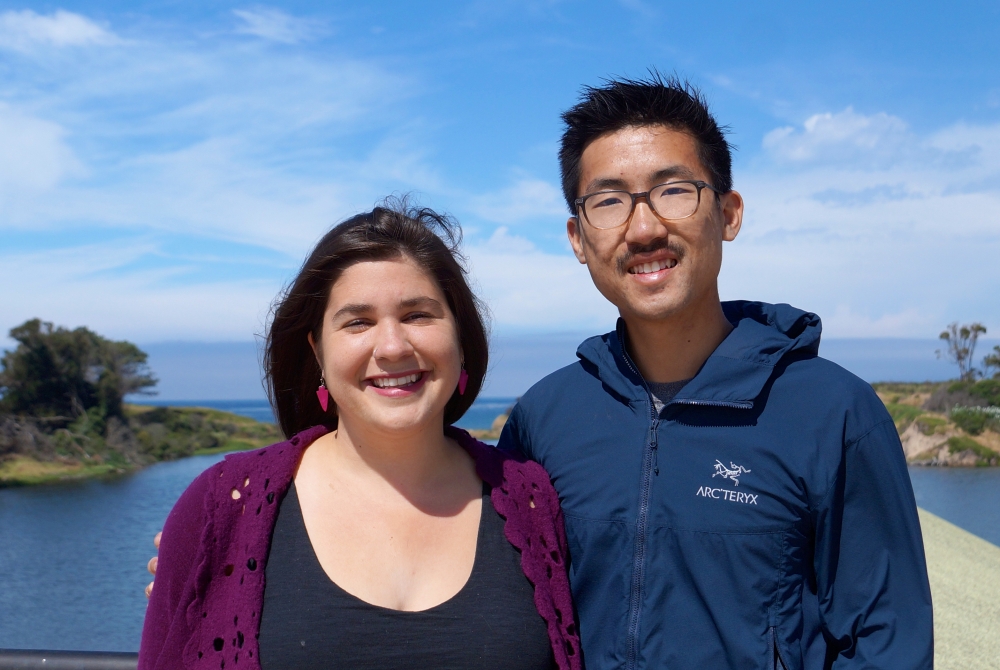
Tuning In to the Channel

The Santa Barbara Channel is one of the most productive ecosystems in the world, supporting a diverse assemblage of life from giant kelp to phytoplankton.
In December, a group of UC Santa Barbara graduate students will have an opportunity to explore that planktonic life and how it varies on a daily basis.
Kelsey Bisson and Nicholas Huynh from the Interdepartmental Graduate Program in Marine Science wrote a winning proposal for an expedition aboard the Research Vessel (R/V) Sally Ride, a state-of-the-art ship operated by the Scripps Institution of Oceanography. This is the first time UCSB has won funding from the UC Ship Funds Program. The award is valued at more than $250,000.
“The overall objective of the project is to explore the daily rhythms of marine plankton within the Santa Barbara Channel,” said Huynh, who with Bisson will be co-chief scientists of the graduate student-led expedition. “The area has primarily been studied on monthly and seasonal time scales, and we hope to complement that vast dataset with observations that closely examine 24-hour cycles.”
The students also received a $50,000 grant from the National Academies Keck Futures Initiative for an adjunct project, “ROAM: Rendering Oceanography in Artistic Mediums,” which will take place during the week on the R/V Sally Ride. Four artists — a creative writer, a videographer, an illustrator and a musician — will join the expedition to collaborate with one other and the scientists aboard. The goal? To translate scientific efforts in ways that are compelling and relatable, including the production of a documentary, an illustrated novella and a public art science installation.
“ROAM was designed to leverage the strengths of art and science to motivate a love for the deep ocean across a range of communities,” Bisson said. “By translating the science experience through art, ROAM will build empathy and wonder for our ocean — and ultimately spark a commitment to marine stewardship.”
Huynh and Bisson will be joined by 14 students and five faculty members from three universities, including biogeochemist David Valentine. The team will characterize how marine microbes influence and are influenced by their geochemical environment on hourly time scales by employing a wide range of oceanographic methodologies and technologies from water incubations to autonomous underwater vehicle surveys to remote sensing.
“We will look at processes such as rates of photosynthesis, herbivory, decomposition and infection, zooplankton migration up and down the water column and water mass circulation,” Bisson explained.
The scientists plan to make their data publicly available after publishing their results in peer-reviewed journals. All members of the expedition will blog about their experiences during the voyage. The online efforts, according to Bisson, will make the ocean more accessible to people who live far from it, which in turn will breed concern for ocean health, stimulate interest in the deep ocean and perhaps inspire careers in oceanography.
“I am really impressed with the leadership the students have shown in getting this endeavor off the ground,” said Alyson Santoro, an assistant professor in UCSB’s Department of Ecology, Evolution and Marine Biology who will participate in the December expedition. “It will be a unique and important part of their oceanography training.”



